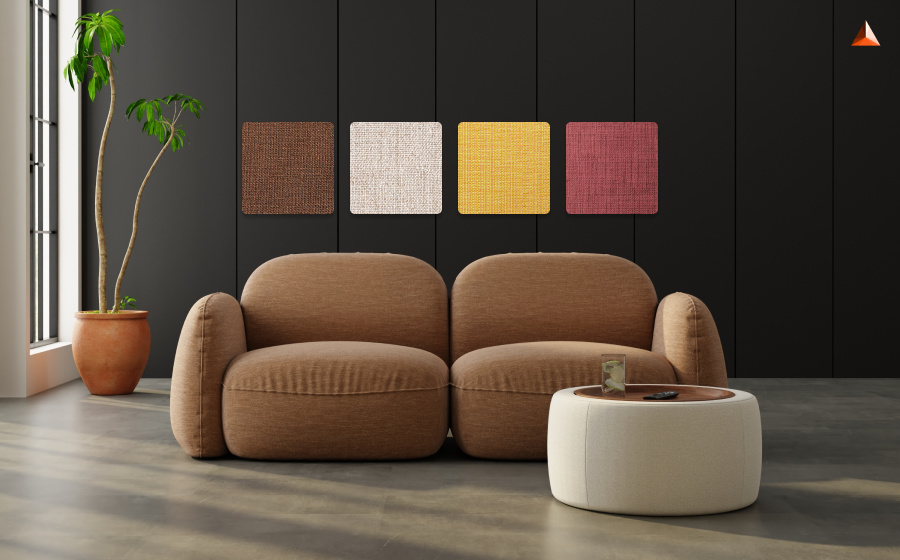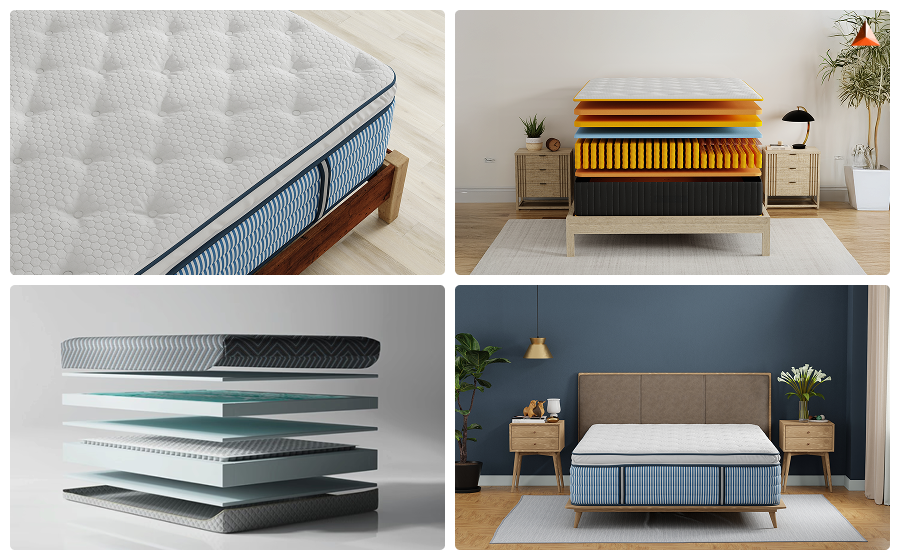When you're in the business of creating great products, one thing quickly becomes clear: materials and finishes make or break a design. Whether you're showcasing a premium wooden cabinet, a metallic chair frame, or a ceramic bathroom accessory, your buyers want to see and feel the difference.
But here’s the catch—photographing every possible material and finish combination? Not only is it time-consuming, but it’s also cost-prohibitive and operationally inefficient. This is where 3D technology flips the script.
If you’ve been relying on traditional product photos or physical prototypes to demonstrate material options, it’s time to rethink your strategy. In this blog, we’ll break down how 3D visualization empowers you to showcase your design in every material, color, and finish, without the logistical nightmare.
I’ll walk you through practical applications, benefits, and how leading brands are doing this at scale using advanced 3D platforms like imagine.io (but no pressure—this is all about helping you make an informed decision).
Get the latest updates straight to your inbox.
By clicking sign up you'll receive occasional emails from imagine.io. You always have the choice to unsubscribe within every email you receive.
Why Showing Material and Finish Variants Matters in B2B

Before we dive into the how, let’s explore why material and finish variants are a critical aspect of product presentation—especially for teams in product design, marketing, and merchandising.
B2B buyers expect personalization and flexibility. A client might love your sofa silhouette but prefer velvet instead of leather. Or a retail partner might want to see your dinnerware line in both matte and glossy finishes before placing a purchase order. The ability to visualize these options accurately helps close the gap between design intent and buyer confidence.
But here’s the catch—most manufacturers already attempt this. They show different materials and finishes in their catalogs and ecommerce listings. The problem? Many still rely on static swatches or thumbnails, or they showcase the variant in low-resolution overlays rather than rendering the full product in that specific material.
This shortcut creates friction. Swatches alone don’t convey the nuances of sheen, depth, or texture on a finished product. And when visuals fall short, so do conversions.
Your sales cycles depend on visual clarity. Inaccurate or incomplete product visuals can stall buyer decisions and slow down internal approvals—leading to extended lead times or even missed opportunities.
Meanwhile, competitors are raising the bar. Brands leveraging high-fidelity 3D visualization are showing entire product catalogs in every available finish—without needing to physically manufacture each SKU. They’re able to offer buyers clarity, speed, and confidence at scale.
The Traditional Bottleneck: Photoshoots & Physical Prototypes
Let’s say you have 10 SKUs and 6 finish options. That’s 60 product variants. Now, imagine organizing a photoshoot for each. You’ll need:
- Multiple prototypes
- Studio time
- Photographers
- Post-production edits
- Budget. Lots of it.
And what if the client requests a new finish that wasn’t planned for? Back to the drawing board. This model just doesn’t scale anymore.
Enter 3D: A Scalable, Flexible Way to Show It All
3D visualization allows you to create a digital twin of your product and apply an unlimited number of materials or finishes—virtually and instantly. Here’s how it works at a high level:
- Create a 3D model of your product
- Upload or apply digital material swatches—wood grains, metallics, fabrics, plastics, paints, etc.
- Render or preview combinations in real time (or automate generation of every SKU variant)
- Use it across your marketing channels—from websites to catalogs to interactive configurators
Let’s unpack each of these.
1. Building the Master 3D Model
The process starts with a high-quality 3D model. This digital replica should be accurate down to the stitch, seam, and bevel. With platforms like imagine.io, your team can either upload an existing 3D model or create one from scratch with expert support.
Pro tip: Invest in one high-fidelity 3D model. This becomes your “source of truth” for all future renders and variants.
2. Applying Materials: Digitize Your Finish Library
Next, you apply finishes—this is where things get exciting. Platforms like imagine.io let you upload your own finished swatches or choose from pre-built libraries. For example:
- Simulate walnut wood with realistic grain direction and sheen
- Switch between brushed nickel and polished chrome for hardware
- Show how matte black paint vs. glossy red changes a product’s tone
Material mapping in 3D is incredibly detailed. You control texture, gloss, reflectivity, light absorption, and even fabric draping effects.
3. Real-Time Configuration and Variant Rendering

Once your model and materials are in place, you can:
- Render multiple images showing every possible combination
- Use interactive tools (like 360° spinners or configurators) to let your buyers explore variants themselves
- Create “exploded views” to demonstrate what goes where (ideal for furniture or hardware)
- Instantly toggle between external and internal views
This is not just about pretty pictures. It’s about helping your customer visualize their exact order, confidently.
4. Use Across Teams: Marketing, Sales, eCommerce & More
The final 3D visuals can be used far beyond product development:
- Marketing teams can use them in catalogs, brochures, and ads.
- Sales teams can present customized visuals to clients during pitches.
- eCommerce teams can use them for AR integration or dynamic product pages.
- Retail partners can get high-res visuals without the back-and-forth.
With imagine.io, you can also automate the entire pipeline—generate 100s of images in minutes, not months.
Real-World Use Case: A Furniture Brand Scaling to 500+ Variants
A leading home furniture brand used imagine.io to visualize their bestselling modular sofa in 18 fabric options, 4 leg finishes, and 3 layout configurations—that’s over 200 variants rendered digitally in a week.
No photoshoots, no physical samples. Their sales team now walks into pitches with personalized visuals tailored to the client’s preferences.
The Bottom Line
In a B2B landscape where speed, accuracy, and customization drive conversion, 3D material and finish visualization isn’t a nice-to-have—it’s a game-changer. If you're still relying on physical prototypes or photoshoots to show off your design variants, you're leaving efficiency and opportunity on the table.
A centralized 3D pipeline allows you to stay agile, reduce cost, and most importantly—give your buyers the visual clarity they need to move faster. And remember: it’s not about replacing design craftsmanship. It’s about amplifying it.
If you’re thinking about scaling your product visuals, streamlining your variant workflow, or just tired of the cost and delay of photoshoots, let’s chat. imagine.io is built to help product teams like yours deliver stunning, accurate 3D visuals at scale—without the complexity. Book a Demo to see how it works.


.gif?width=1296&height=1296&name=Untitled%20design%20(8).gif)




.png?width=500&name=How%20to%20Add%20a%203D%20Product%20Configurator%20to%20Your%20WordPress%20Website%20(Complete%20B2B%20Guide).png)
















%20(1).png?width=500&name=Why%20Exploded%20Mattress%20Views%20Matter%20(And%20How%20to%20Generate%20Them)%20(1).png)
.png?width=500&name=Best%20Shopify%20Product%20Configurator_%20How%20to%20Choose%20the%20Right%20One%20(2).png)
.png?width=500&name=Why%20Exploded%20Mattress%20Views%20Matter%20(And%20How%20to%20Generate%20Them).png)



.png?width=500&name=Best%20Shopify%20Product%20Configurator_%20How%20to%20Choose%20the%20Right%20One%20(1).png)







.png?width=500&name=How%203D%20Rendering%20Can%20Make%20or%20Break%20Your%20Industrial%20Design%20Pitch%20(1).png)








%20with%20Digital%20Twins%20and%203D%20Visualization.png?width=500&name=Optimizing%20Your%20Digital%20Asset%20Management%20(DAM)%20with%20Digital%20Twins%20and%203D%20Visualization.png)




.png?width=500&name=Styling%20Home%20Decor%20for%202025_%20From%20Global%20Influences%20to%20Playful%20Personalization%20(1).png)
